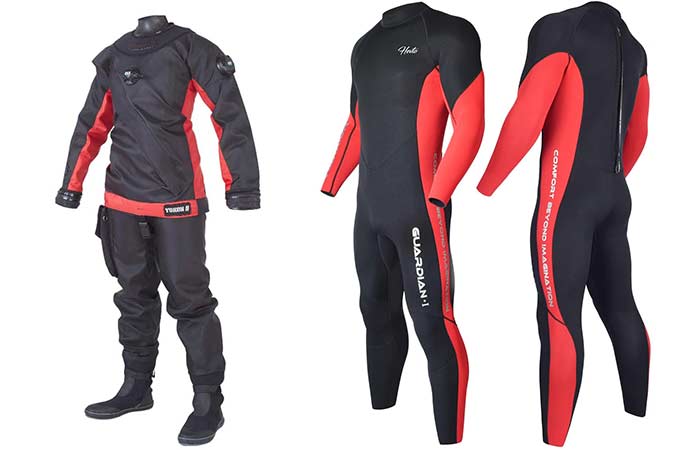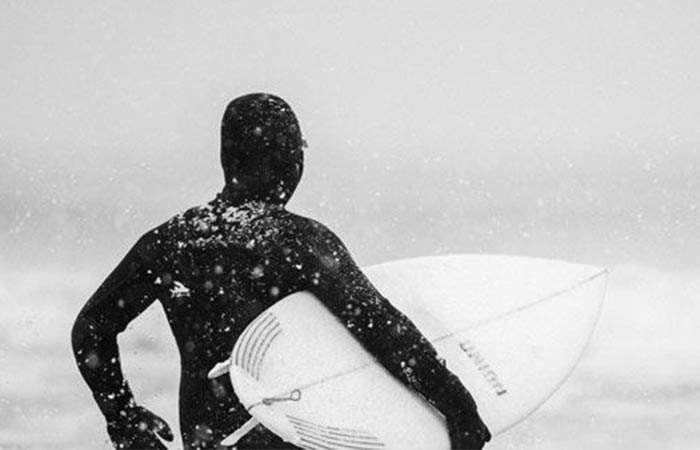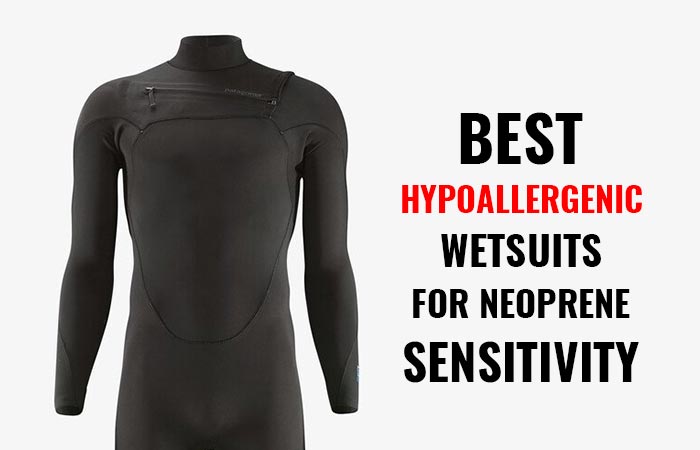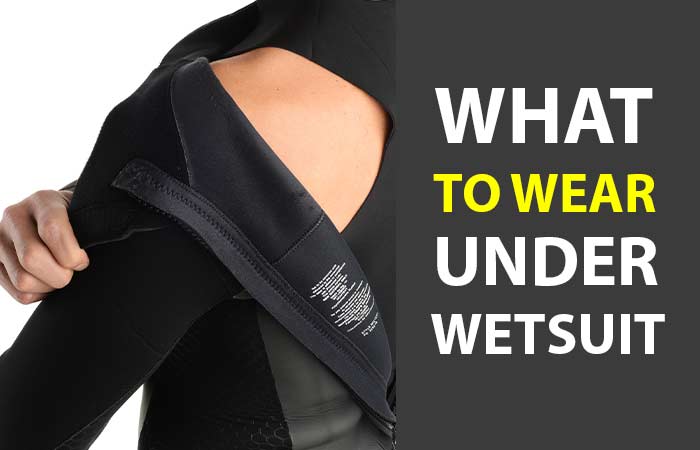Wetsuits Colors: Why Black? What is the Best Color?
You may have noticed that a majority of the wetsuits you see in the water and the shops are in black. This color has a lot to do with the purpose of the suit which is protection from the cold, UV radiation and many other harmful things in the environment. Wetsuits also come in many other colors and patterns.
The black color of wetsuits has various benefits including being cheaper to produce than other colors, lasting longer, protecting the wearer against UV rays, keeping out the cold, and being the color that most people will go for when unsure of what color they should pick.
If you’re wondering why a majority of the wetsuits are in black, this article explains why this is so by detailing the reasons behind this. In addition, find more interesting info on some colors can are said to be safe especially in dangerous waters.
What role does Color play in the water & for the wearers?
Color plays a major role in protecting you. This is because different colors have a different ability to regulate your body temperature and generally provide conducive conditions.
Brightly colored or patterned wetsuits may help improve your level of contrast in the water which is very important in a search and rescue situation. High contrast is an essential aid to rescuers trying to spot you in the water.
Beyond that, the color of the wetsuit determines your looks and style.
Why Are Wetsuits Black?
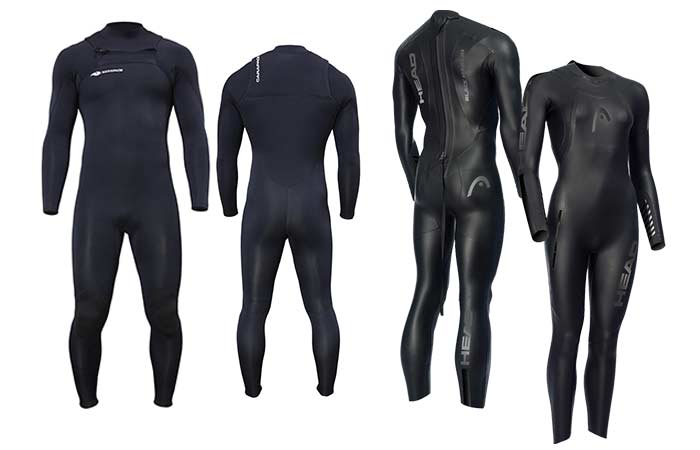
Wetsuits are black for many reasons. Some of them include the following:
1. It’s Cost-Effective
During the manufacture of rubber, its combination with stabilizing compounds often results in a black color. Initially, rubber was stabilized with soot (carbon black) to turn from its milky white color to the black of the soot.
Today, while there are better stabilizers for rubber such as polymers, the result is still a black product. Neoprene, being a form of stabilized rubber, has much better resistance than the original unstable rubber and still comes out as black.
For marine applications, neoprene is further stabilized with a carbon black filler making it more durable and resistant to wear and tear. This process is quite cheap and is thus the most preferred over the others which require adding color to the result.
2. Black Protects the Wearer from UV Rays
While neoprene is durable enough to be used for all marine applications, the addition of carbon black adds a very important quality; UV protection. Carbon black adds the black color to the wetsuit with the benefit that it now absorbs the UV radiation from the sun at the highest rate compared to other colors.
The reason black is good at UV protection is that it’s simply a lack of color and quickly absorbs photons when exposed to them. After black, the next good color at UV protection is red. That’s the reason some divers wear red or black.
3. It’s More Durable
Even when neoprene is a tough and durable material on its own, it’s still vulnerable when exposed to water and stretched on the body like wetsuits do. Neoprene has a relatively high rate of oxygen absorption (oxidation) and a low level of viscoelasticity (the ability to stretch and remain strong) than when stabilized with carbon black.
With the addition of carbon black to the neoprene, the wetsuit becomes much more resilient against the elements and will perform well even when stretched out. It’ll also last longer than before and thus offer more protection and for longer.
4. Keeps You Warm
On its own, neoprene is a great insulator owing to its impressive dielectric strength. As such, it provides very good heat regulation while in the water. This is why neoprene is the material of choice for insulation and temperature regulation such as in the case of wetsuits and industrial sealants.
The addition of a black color makes a wetsuit one of the simplest yet most effective temperature regulator. Black has a high rate of photon absorption and will thus absorb all the heat around you and retain it. That includes the heat from your body and that from the sun leading to a well-heated suit as you take a dive in the water.
5. A Great Marketing Tool
You might have noticed that most cloths people put on are in black. That is compared to any other color. The reason for this is that people go for black when they’re not sure of what to pick. Also, most costly purchases are made on black cloths as they’re easy to match with other pieces of clothing.
The same goes for wetsuits as most people generally go for black especially with first-time purchases. They also look much better than other colors on most water goers with the result that they sell more.
These attributes make black the best color when it comes to wetsuits. While there are other colors you can pick from, you won’t likely get the benefits of a black wetsuit in them. For other colors, you’ll need a thicker and more advanced suit at a higher cost as well to get the benefits of a balck wetsuit.
What Other colors are available?
Wetsuits, just like other cloths and materials, can be produced in any color you desire. These include black, gray, white, red, yellow and many others. Following are images of some of the colors in the market
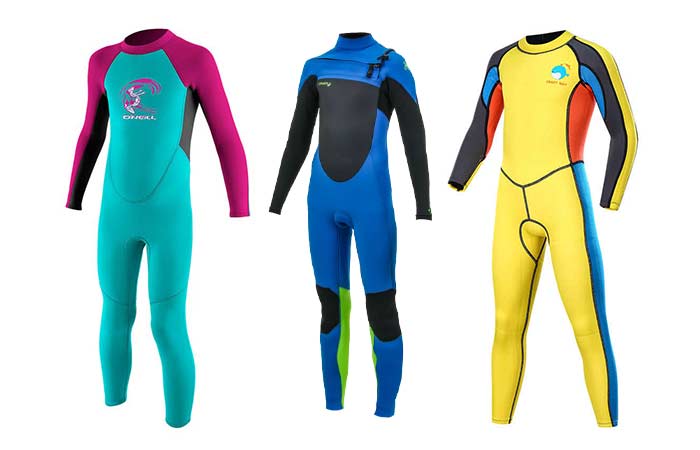

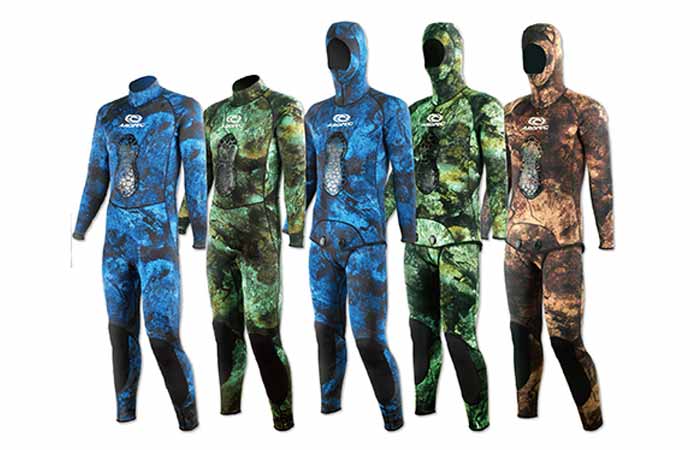

Multicolor Wetsuits and Safety
There is little evidence to show that more colors on a wetsuit will provide you with better functionality than a single color. In most cases, depending on how and where you will use the wetsuit, a single color will provide uniform protection compared to multiple colors.
The reason for this is that different colors may be created from different materials and have differing properties when it comes to heat and other aspects that are vital to a diver. As such, simply getting a one-colored wetsuit is the best option.
However, there are multicolored wetsuits aimed at confusing underwater predators such as sharks. Rather than have a single color, these suits are given weird colors and patterns that sharks can’t tell are of what animal. As such, they’ll hesitate from attacking the diver long enough to seek safety.
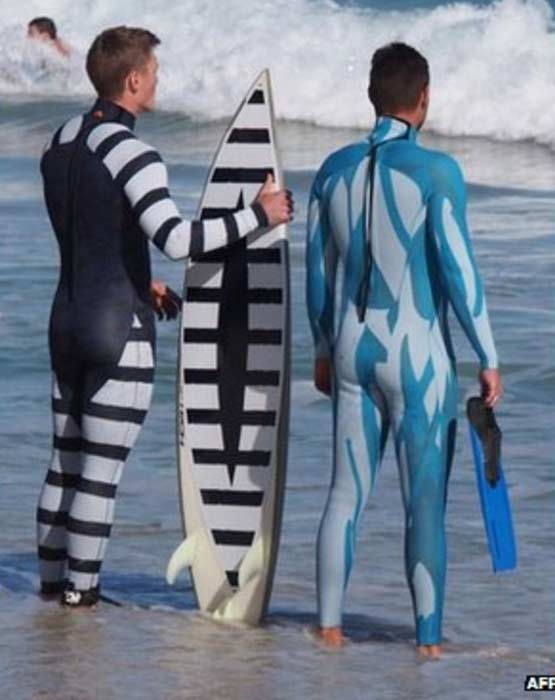
From a nature perspective, highly contrasting colors and patterns often signal something poisonous or dangerous, which means that having these colors on wetsuits could scare sharks away. Following is TDEX talk with details
Which Color is the Best/Popular?
In terms of popularity, availability and functionality, black is the best as it helps in various ways other colors can’t.
There are some myths, however, that black is chosen because animals in the water such as sharks won’t see you easily. This isn’t true since sharks and killer whales hunt through the smell of blood in the water.
In any case, when a shark is attacking, it often does so from below the target. From this position, the target is a black shadow and the color of your suit won’t matter.
Also, the idea that a black suit makes you look like a seal for better underwater protection is a lie. While sharks and some underwater hunters may not have the best of eyesight, they can tell quite well what a seal and a human look like.
More on Wetsuits
- How do Wetsuits Work?
- What are Wetsuits Made of? Types & Top Brands
- Wetsuit vs Dry Suit
- How to Properly put on a Wetsuit, Remove+ Dos & Don’ts
- What to Wear Under Wetsuit: Female, Men & Triathlons Undergarments
- How Tight/Fitting should a Wetsuit be?
- Wetsuit Thickness Guide + Temperature Chart
- How to Wash a Wetsuit + Best Cleaners, Shampoo & Soap
- How to Dry a Wetsuit + Best Drying Hangers & Racks
- Wetsuit Storage and Care Tips
Best Wetsuits


